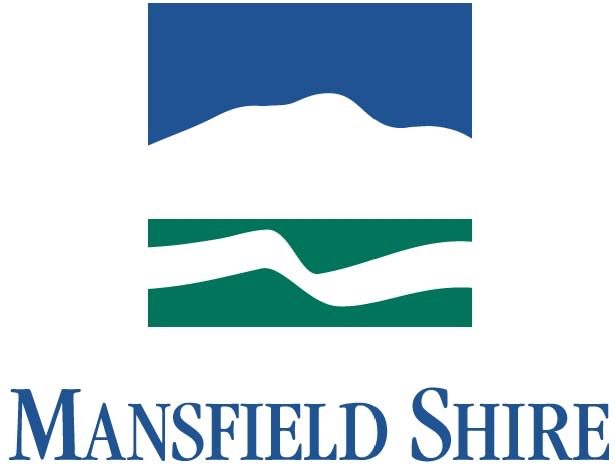Information
-
Audit Title
-
Document No.
-
Proprietor
-
Conducted on
-
Prepared by
-
Location
GENERAL INFORMATION
-
Date and Time audit began
-
Name of business
-
Name of proprietor or staff in attendance
-
Authorised officer conducting assessment
- Kevin Murphy
- Kelly Mahoney
- Ewen Ross
ASSESSMENT TYPE
-
Reason for the assessment
- Scheduled Inspection
- Follow up Inspection
- Complaint Inspection
- Transfer Inspection
- Routine Inspection
- Registration
RECEIVING
-
1) Protection from contamination (5(1) of 3.2.2)
-
5(1) of 3.2.2 A food business must take all practicable measures to ensure it only accepts food that is protected from the likelihood of contamintion. KEY POINTS - Food only delivered when someone is at the business to assess and accept the items (wherever possible). - Food deliveries checked randomly for signs of contamination. - Packaging of food sound and undamaged. - All foods protected from animals, dust, etc. - Food protected from cross-contamination, i.e: raw and ready to eat foods stored separately. - Food stored in containers suitable for food contact
-
2) Identification/traceability of food (5(2) of 3.2.2)
-
5(2) of 3.2.2 A food business must provide, to the reasonable satisfaction of an authorised officer upon request, the following information relating to food on the food premises: (a) the name and business address in Australia of the vendor, manufacturer or packer or, in the case of food imported into Australia, the name and business address in Australia of the importer; and (b) the prescribed name or, if there is no prescribed name, an appropriate designation of the food. KEY POINTS All packaged foods are labelled, or if unlabelled the source and content of the food is able to be identified SNC EVIDENCE Approved suppliers list – RECORD
-
3) Temperature control of PHF (5(3) and (4) of 3.2.2
-
5(3) of 3.2.2 A food business must, when receiving potentially hazardous food, take all practicable measures to ensure it only accepts potentially hazardous food that is at a temperature of: (a) 5oC or below; or (b) 60oC or above, unless the food business transporting the food demonstrates that the temperature of the food, having regard to the time taken to transport the food, will not adversely affect the microbiological safety of the food. 5(4) of 3.2.2 A food business must, when receiving potentially hazardous food, take all practicable measures to ensure that food which is intended to be received frozen, is frozen when it is accepted. KEY POINTS • PHF only accepted at 5oC or below or 60oC or above, • PHF only accepted at another temp if the delivery has been for a controlled period of time that has not affected the safety of the food (must be documented) • Frozen foods, frozen when accepted, ie: food not thawing? SNC PHF delivered out of temperature control (allow 5°C deviation) EVIDENCE Record of deliveries Working thermometer
STORAGE
-
4) Protection from contamination (6(1)(a) of 3.2.2)
-
6(1)(a) of 3.2.2 A food business must, when storing food, store the food in such a way that it is protected from the likelihood of contamination. KEY POINTS · Food stored to protect from cross- contamination, ie: raw foods stored separately or kept away from ready to eat foods. · Food covered to protect it from contamination. · Food stored in food grade containers. · Food stored off the floor. · Unlabelled food date marked to assist with stock rotation. SNC Ready to eat food contaminated by raw food.
-
5) Appropriate environmental conditions (6(1)(b) of 3.2.2
-
6(1)(b) of 3.2.2 A food business must, when storing food, store the food in such a way that the environmental conditions under which it is stored will not adversely affect the safety and suitability of the food. KEY POINTS Food protected from heat, moisture, humidity
-
6) Temperature control of PHF (5(3) and (4) of 3.2.2)
-
6(2) of 3.2.2 A food business must, when storing potentially hazardous food: (a) store it under temperature control; and (b) if it is food that is intended to be stored frozen, ensure the food remains frozen during storage. KEY POINTS · PHF’s stored at or below 5oC or at or above 60oC or · PHF’s stored at another temperature for a controlled period of time that will not affect the safety of the food (must be documented) · PHF’s intended to be stored frozen remain frozen during storage. SNC Temperature control of PHF* (allow 5°C deviation) · Cold food below 5oC · Hot food above 60oC · Frozen food hard · Other control -2/4 hr. rule EVIDENCE Observation/monitoring Records to verify temperatures Working thermometer
PROCESSING
-
7) Safe and suitable food (7(1)(a) of 3.2.2)
-
7(1)(a) of 3.2.2 A food business must take all practicable measures to process only safe and suitable food; KEY POINTS · Food checked prior and during processing for signs of contamination and deterioration. · Ingredients sourced from reputable suppliers. · Stock rotated adequately so foods with expired “use-by‟ dates are not used.
-
8) Protection from contamination (7(1)(b)(i) of 3.2.2)
-
7(1)(b)(i) of 3.2.2 A food business must when processing food take all necessary steps to prevent the likelihood of food being contaminated. KEY POINTS Microbiological • Gloves/tongs used (all reasonable measures to minimise handling food/ surfaces) • Separate boards, knives, preparation areas. • Food contac surfaces washed and sanitised between use • Unclean or unsanitised utensils or food contact surfaces that have contaminated RTE food (SNC*) Chemical • Chemicals stored away from food · Appropriate sanitising procedure. Physical • Food protected from dirt, dust, foreign objects & pests SNC Unclean or unsanitised utensils or food contact surfaces that have contaminated RTE food. EVIDENCE Colour coded chopping boards, utensils etc provided Gloves, tongs etc provided Chemical sanitiser provided. Designated chemical storage area
-
9) Adequate cooking/processing (7(1)(b)(ii) of 3.2.2)
-
7(1)(b)(ii) of 3.2.2 A food business must when processing food where a process step is needed to reduce to safe levels any pathogens that may be present in the food — use a process step that is reasonably known to achieve the microbiological safety of the food. KEY POINTS · Process step used that is reasonably known to achieve the microbiological safety of the food (eg cooking, pickling, fermenting) · Process step used adequately (eg: cooking time long enough). · Food cooked to min 75oC (RECORD) · Other methods eg cooking, pickling, fermenting, drying, salting, smoking etc · Soups, sauces, gravies, casseroles etc brought to boil as part of cooking process. SNC PHF requires cooking but not thoroughly cooked. EVIDENCE Process/Activity Log (RECORD) Working thermometer
-
10) PHF out of temp. control for min. time (7(2) of 3.2.2)
-
7(3) of 3.2.2 A food business must, when cooling cooked potentially hazardous food, cool the food: (a) within two hours — from 60oC to 21oC; and (b) within a further four hours — from 21oC to 5oC, unless the food business demonstrates that the cooling process used will not adversely affect the microbiological safety of the food. KEY POINTS · Business demonstrate that it can achieve the cooling temperature/time requirements for foods cooked? Ie: from 60oC to 21oC within 2 hours, and from 21oC to 5oC within a further 4 hours · Large volumes of food divided into smaller portions to aid cooling. · Food cooled from: – 60oC - 21oC in 2 hours (on bench) 21oC - 5oC in 4 hours (cool room) (SNC*) · Bulk food transferred into small containers for cooling SNC Food not being cooled from: – 60oC - 21oC in 2 hours (on bench) 21oC - 5oC in 4 hours (cool room) EVIDENCE Process/Activity Log (RECORD)
-
11) Cooling of PHF (7(3) of 3.2.2)
-
7(2) of 3.2.2 A food business must, when processing potentially hazardous food that is not undergoing a pathogen control step, ensure that the time the food remains at temperatures that permit the growth of infectious or toxigenic micro-organisms in the food is minimised. KEY POINTS · PHF’s thawed in the coolroom/refrigerator, microwave or using an alternative method that will not affect the safety of the food? · Time food is stored outside of temperature control kept to a minimum. Eg: foods returned to coolroom as soon as processed. · Raw food defrosted in cool room, microwave or Refrigerator. · Other control -2/4 hr. rule (RECORD) SNC Ready-to-eat PHF’s out of temperature control for prolonged period. EVIDENCE Time Log (RECORD) 2/4 hr. rule (RECORD)
-
12) Reheating of PHF (7(4) of 3.2.2)
-
7(4) of 3.2.2 A food business must, when reheating previously cooked and cooled potentially hazardous food to hold it hot, use a heat process that rapidly heats the food to a temperature of 60oC or above, unless the food business demonstrates that the heating process used will not adversely affect the microbiological safety of the food. KEY POINTS · PHF reheated quickly (ie: not greater than 2 hours) to above 75oC · Bain maries not used for reheating · PHF reheated once only SNC EVIDENCE Process/Activity Log (RECORD)
DISPLAY
-
13) Protection from contamination (8(1), (2), (3) & (4) of 3.2.2)
-
8(5) of 3.2.2 A food business must, when displaying potentially hazardous food: (a) display it under temperature control; and (b) if it is food that is intended to be displayed frozen, ensure the food remains frozen when displayed. KEY POINTS · PHF maintained at or below 5oC or at or above 60oC or · PHF maintained at another temperature for a controlled period of time that will not affect the safety of the food (must be documented) · Food intended to be displayed frozen remain frozen during display” · Frozen food sold defrosted – labelled as such SNC Temperature control of PHF* (allow 5°C deviation) · Hot food above 60oC · Frozen food hard · Cold Food below 5oC · Other control -2/4 hr. rule EVIDENCE Storage Temp RECORD
-
14) Temperature control of PHF incl. frozen (8(5) of 3.2.2)
-
9 of 3.2.2 A food business must, when packaging food: (a) only use packaging material that is fit for its intended use; (b) only use material that is not likely to cause food contamination; and (c) ensure that there is no likelihood that the food may become contaminated during the packaging process. KEY POINTS · Packaging material appropriate for food contact use · Packaging material clean and free from foreign matter · Packaging materials stored appropriately and free from contamination · Only food grade containers/ packaging materials used – clean & in good condition · Packaging equipment maintained so as not to potentially contaminate the food (eg: free from grease, dust, metal).
PACKAGING
-
15) Appropriate materials and process (9 of 3.2.2)
-
10(a) of 3.2.2 A food business must, when transporting food protect all food from the likelihood of contamination KEY POINTS · Care taken to ensure packaging does not become damaged eg: through poor handling, exposure to rain, etc · Care taken to ensure packaging does not become contaminated eg: through exposure to chemicals. · Food transported so as to protect it from cross-contamination, ie: ready to eat foods protected from raw foods · Food covered & in appropriate containers Food Transport Vehicle clean EVIDENCE No chemicals or animals in vehicle.
TRANSPORTATION AND DISTRIBUTION
-
16) Protection from contamination (10(a) of 3.2.2)
-
10 of 3.2.2 A food business must, when transporting food: (a) protect all food from the likelihood of contamination; (b) transport potentially hazardous food under temperature control; and (c) ensure that potentially hazardous food which is intended to be transported frozen remains frozen during transportation. KEY POINTS · PHF maintained at or below 5oC or at or above 60oC during transport and distribution or · PHF transport/distributed at another temperature during for a controlled period of time that will not affect the safety of the food (must be documented) · PHF intended to be transported frozen, kept frozen SNC Ready to Eat PHF transported out of temperature control for prolonged periods. EVIDENCE Process/Activity Record Time log record RECORD
-
17) Temperature control PHF (10(b) & (c) of 3.2.2)
-
10 of 3.2.2 A food business must, when transporting food: (a) protect all food from the likelihood of contamination; (b) transport potentially hazardous food under temperature control; and (c) ensure that potentially hazardous food which is intended to be transported frozen remains frozen during transportation. KEY POINTS · PHF maintained at or below 5oC or at or above 60oC during transport and distribution or · PHF transport/distributed at another temperature during for a controlled period of time that will not affect the safety of the food (must be documented) · PHF intended to be transported frozen, kept frozen SNC Ready to Eat PHF transported out of temperature control for prolonged periods. EVIDENCE Process/Activity Record Time log record RECORD
RECALLS/FOOD DISPOSAL
-
18) Food for disposal not sold/recall process (11, 12 of 3.2.2)
-
11 of 3.2.2 A food business must ensure that food for disposal is held and kept separate until it is: (a) destroyed or otherwise used or disposed of so it cannot be used for human consumption; (b) returned to its supplier; (c) further processed in a way that ensures its safety and suitability; or (d) ascertained to be safe and suitable. Food for disposal means food that is subject to recall; has been returned; is not safe or suitable; or is reasonably suspected of not being safe or suitable. A food business must not sell food that has been already served to a person to another person unless the food was completely wrapped when served and has remained completely wrapped. 12 of 3.2.2 A food business engaged in the wholesale supply, manufacture or importation of food must: (a) have in place a system to ensure the recall of unsafe food; (b) set out this system in a written document and make this document available to an authorised officer upon request; and (c) comply with this system when recalling unsafe food KEY POINTS Food Disposal (All food businesses) Food for disposal separated and identified so it is not accidentally sold or used NB: food for disposal includes food subject to recall, returned food, food that is not safe or suitable (eg: contaminated by foreign matter, pathogenic bacteria or perished) Food Recall (Wholesale suppliers/manufacturers/importers only) System in place to ensure the recall of unsafe food Written documentation available upon request System complied with when recalling unsafe food EVIDENCE Documented recall system in place (Wholesale, manufacturer, importer)
-
Does the food premises supply food waste to a person where it may be used to feed animals?
HEALTH, HYGIENE & KNOWLEDGE
-
19) Health of food handlers - responsibilities (14 of 3.2.2)
-
14 of 3.2.2 A food handler who has a symptom that indicates the handler may be suffering from a food-borne disease, or knows he or she is suffering from a food-borne disease, or is a carriers of a food-borne disease, must, if at work; (a) report that he or she is or may be suffering from the disease, or knows that he or she is carrying the disease, to his or her supervisor (b) not engage in any handling of food where there is a reasonable likelihood of food contamination as a result of the disease; and (c) if continuing to engage in other work on the food premises - take all practicable measures to prevent food from being contaminated as a result of the disease A food handler must notify his or her supervisor if the food handler knows or suspects that he or she may have contaminated food whilst handling food. KEY POINTS - Food handler suffering/carrying food poisoning disease (eg; vomiting and/or diarrhoea) must: Report this to their supervisor not engage in any handling of food until at least 48 hours after symptoms have ceased - Food handlers engaged in other work on the food premises (eg: admin, cleaning etc), must take all practicable measures to prevent food from being contaminated. SNC Food handler working if known carrier or still contagious. EVIDENCE Illness Register Record
-
20) Hygiene of food handlers - responsibilities (13, 15 of 3.2.2)
-
undefined
-
21) Food business - responsibilities (16, 18 of 3.2.2)
-
22) Adequate hand washing facilities (17 of 3.2.2)
-
23) Food handling - skills & knowledge (3 of 3.2.2)
-
3 of 3.2.2 A food business must ensure that persons undertaking or supervising food handling operations have: (a) skills in food safety and food hygiene matters; and (b) knowledge of food safety and food hygiene matters, commensurate with their work activities. Subclause (1) does not apply to a food business in relation to persons undertaking food handling operations for fundraising events, that is, events: (a) that raise funds solely for community or charitable causes and not for personal financial gain; and (b) at which only food is sold that is not potentially hazardous or which is to be consumed immediately after thorough cooking. KEY POINTS · Food handlers/supervisors understand the principles of food safety and hygiene. eg: correct storage temperatures for PHF, cross- contamination, difference b/t detergents and sanitisers etc. · Food handlers/supervisors able to perform tasks necessary to ensure the safety of the food. eg: equipment set at the right temperature, food cooked thoroughly, etc. · Evidence of ongoing education of food handlers and supervisors in food safety and hygiene. eg: in-house training, distribution of relevant docs, attendance at food safety courses, watching of relevant videos, etc. · Food Safety Supervisor training qualifications · Food handlers/FSS have good understanding of cross contamination, temp. control, use of sanitisers etc EVIDENCE FSS Qualification Question food handlers and FSS* – cross contamination, temp. control, use of sanitisers etc
PREMISES AND HYGIENE
-
24 )Cleanliness of premises, fittings, equipment (19 of 3.2.2)
-
19 of 3.2.2 A food business must maintain food premises to a standard of cleanliness where there is no accumulation of: (a) garbage, except in garbage containers; (b) recycled matter, except in containers; (c) food waste; (d) dirt; (e) grease; or (f) other visible matter. A food business must maintain all fixtures, fittings and equipment, having regard to its use, and those parts of vehicles that are used to transport food, to a standard of cleanliness where there is no accumulation of: (a) food waste; (b) dirt; (c) grease; or (d) other visible matter. KEY POINTS · Premises maintained so there is no accumulation of garbage, recycled matter, food waste, dirt, grease or other visible matter · Fixtures, fittings and equipment maintained so there is no accumulation of food waste, dirt, grease or other visible matter · Adequate space between and under fittings and appliances for cleaning · Appliances on castors where possible to assist in cleaning · Appropriate cleaning chemicals used for different surfaces · Chemicals clearly labelled and used in accordance with the manufacturers instructions SNC Cleanliness of premises, fittings, equipment - Discretion of EHO EVIDENCE Cleaning schedule in use (RECORD)
-
25) Cleaning/sanitising of food contact surfaces (20 of. 3.2.2)
-
20 of 3.2.2 A food business must ensure the following equipment is in a clean and sanitary condition in the circumstances set out below: (a) eating and drinking utensils — immediately before each use; and (b) the food contact surfaces of equipment — whenever food that will come into contact with the surface is likely to be contaminated. A ‘clean and sanitary condition’ means, in relation to a surface or utensil, the condition of a surface or utensil where it: (a) is clean; and (b) has had applied to it heat or chemicals, heat and chemicals, or other processes, so that the number of micro-organisms on the surface or utensil has been reduced to a level that: (i) does not compromise the safety of the food with which it may come into contact; and (ii) does not permit the transmission of infectious disease. KEY POINTS · Eating and drinking utensils cleaned, sanitised and protected from contamination between uses · Food contact surfaces of equipment cleaned and sanitised between being used for raw food and ready to eat food eg: chopping boards, slicers, display units. · Cleaning cloths sanitised SNC Food contact services sanitised between being used for raw and ready to eat food No Sanitiser EVIDENCE Cleaning Schedule
-
26) Suitability and maintenance of premises, fittings and equipment (21 of 3.2.2 and 3, 10, 11 & 12 of 3.2.2)
-
27) Temperature measuring device (22 of 3.2.2)
-
22 of 3.2.2 A food business must, at food premises where potentially hazardous food is handled, have a temperature measuring device that: (a) is readily accessible; and (b) can accurately measure the temperature of potentially hazardous food to +/– 1oC. KEY POINTS · Thermometer readily available · Thermometer accurately measure to +/- 1oC · Is the thermometer a probe thermometer · Business demonstrate the correct use of the thermometer · Thermometer maintained in a good state of repair and working order eg: flat batteries replaced, calibrated regularly (every 6 months) etc. · Swabs available for cleaning thermometer SNC A working probe thermometer accurate to ±1oC is on site EVIDENCE Thermometer calibration (RECORD)
-
28) Use of "single use" items (23 of 3.2.2)
-
23 of 3.2.2 A food business must: (a) in relation to all single use items, take all practicable measures to ensure they do not come into contact with food or the mouth of a person if they are: (i) contaminated; or (ii) reasonably suspected of being contaminated; and (b) in relation to single use items that are intended to come into contact with food or the mouth of a person: (i) take all practicable measures to protect them from the likelihood of contamination until use; and (ii) not reuse such items. KEY POINTS · Utensils (including eating and drinking utensils) equipment and packaging effectively protected from contamination eg: dirt, chemicals, food waste, insects & rodents. · Single use items such as straws, cutlery and food containers etc immediately discarded so that they cannot be reused
-
29) Control of animals and pests (24 of 3.2.2)
-
24 of 3.2.2 A food business must: (a) subject to paragraph (b), not permit live animals in areas in which food is handled, other than seafood or other fish or shellfish; (b) permit an assistance animal only in dining and drinking areas and other areas used by customers; (c) take all practicable measures to prevent pests entering the food premises; and (d) take all practicable measures to eradicate and prevent the harbourage of pests on the food premises and those parts of vehicles that are used to transport food. Assistance animal’ means an animal referred to in section 9 of the Disability Discrimination Act 1992 of the Commonwealth. KEY POINTS · Doors, windows and other areas adequately sealed against entry of pests · Adequate measures taken to eradicate and prevent the harbourage of pests on the food premises eg: professional pest controller or using sprays, baits or traps. · Animals restricted from food preparation and storage areas · No pest harbourage in external areas or outbuildings SNC Evidence of pest infestation EVIDENCE Pest Control Program (DOC/RECORD) Pest Control Report Bait stations
-
30) Water supply adequate and potable (4 of 3.2.3)
-
4 of 3.2.3 Food premises must have an adequate supply of water if water is to be used at the food premises for any of the activities conducted on the food premises. A food business must use potable water for all activities that use water that are conducted on the food premises. If a food business demonstrates that the use of non-potable water for a purpose will not adversely affect the safety of the food handled by the food business, the food business may use non-potable water for that purpose. KEY POINTS · Food premises have an adequate supply of potable water ie: acceptable for drinking. · Water pressure and/or volume adequate to carry out food operations and cleaning and sanitising · Food business demonstrate that the use of non-potable water will not adversely affect the safety of the food handled, where used for a specific purpose SNC No hot water
-
31) Disposal of sewage and waste water (5 of 3.2.3)
-
5 of 3.2.3 Food premises must have a sewage and waste water disposal system that: (a) will effectively dispose of all sewage and waste water; and (b) is constructed and located so that there is no likelihood of the sewage and waste water polluting the water supply or contaminating food. KEY POINTS · Dirty cleaning water disposed of via gully trap, cleaners sink – not sink or hand basin · Grease trap installed and regularly cleaned EVIDENCE Grease trap pump out receipts
-
32) Storage of refuse & recyclable matter (6 of 3.2.3)
-
6 of 3.2.3 Food premises must have facilities for the storage of garbage and recyclable matter that: (a) adequately contain the volume and type of garbage and recyclable matter on the food premises; (b) enclose the garbage or recyclable matter, if this is necessary to keep pests and animals away from it; and (c) are designed and constructed so that they may be easily and effectively cleaned. KEY POINTS · Facilities for the storage of garbage and recyclable matter (including waste cooking oil) adequate for the volume produced · Refuse bin located in a suitable location · Refuse stored in sealed containers within the bin · Bins designed to keep pests and animals away from the refuse · Refuse removed at sufficiently frequent intervals · Facilities designed and constructed so they can be easily cleaned · Facilities available for cleaning bins · Bins and storage area clean
-
33) Adequate ventilation and lighting (7 & 8 of 3.2.3)
-
7 of 3.2.3 Food premises must have sufficient natural or mechanical ventilation to effectively remove fumes, smoke, steam and vapours from the food premises. 8 of 3.2.3 Food premises must have a lighting system that provides sufficient natural or artificial light for the activities conducted on the food premises. KEY POINTS · Food premises have sufficient natural or suitable mechanical ventilation to effectively remove fumes, smoke, steam and vapours from the food premises · M.E.S*. over all cooking appliances · M.E.S*. clean and working · M.E.S* flues and ductwork clean - internal/ external · Sufficient natural or artificial light provided for the activities conducted on the food premises eg: able to see whether areas and equipment are clean, inspect food, etc · Shatterproof fluorescent tubes or covers installed to ensure that lighting is not a potential source of contamination ie: broken glass does not contaminate food EVIDENCE MES service record/receipt
-
34) Storage of personal effects/chemicals (15 of 3.2.3)
-
15 of 3.2.3 Food premises must have adequate storage facilities for the storage of items that are likely to be the source of contamination of food, including chemicals, clothing and personal belongings. Storage facilities must be located where there is no likelihood of stored items contaminating food or food contact surfaces. KEY POINTS · Cleaning equipment, chemicals and other hazardous materials properly stored in an area separate (e.g. room or cupboard) to food preparation and storage · Designated storage area provided for storing clothing and personal items, which is separate from food preparation and storage areas · Adequate storage provided for dirty linen (eg: tea towels, aprons, etc) · Separate facilities provided for storage of employees personal affects · Separate facilities provided for storage of cleaning chemicals and equipment
-
35) Adequate toilet facilities (16 of 3.2.3)
-
16 of 3.2.3 A food business must ensure that adequate toilets are available for the use of food handlers working for the food business. KEY POINTS · Adequate toilets available for the use of food handlers · Toilets opening into food preparation areas constructed in accordance with Part F4 of the Building Code of Australia? · Toilets provided are clean · Hand basin with warm water, soap and paper towels provided
COMMENTS/OBSERVATIONS
-
Additional comments and actions
REQUIRED ACTIONS
-
Required Actions
INSPECTION OUTCOME
-
Inspection Outcome
REINSPECTION DATE (if required)
-
Select date
SIGNATURES
-
Proprietor/staff:
The above information is true and correct -
Signature of Proprietor/Staff
-
Signature of Officer














